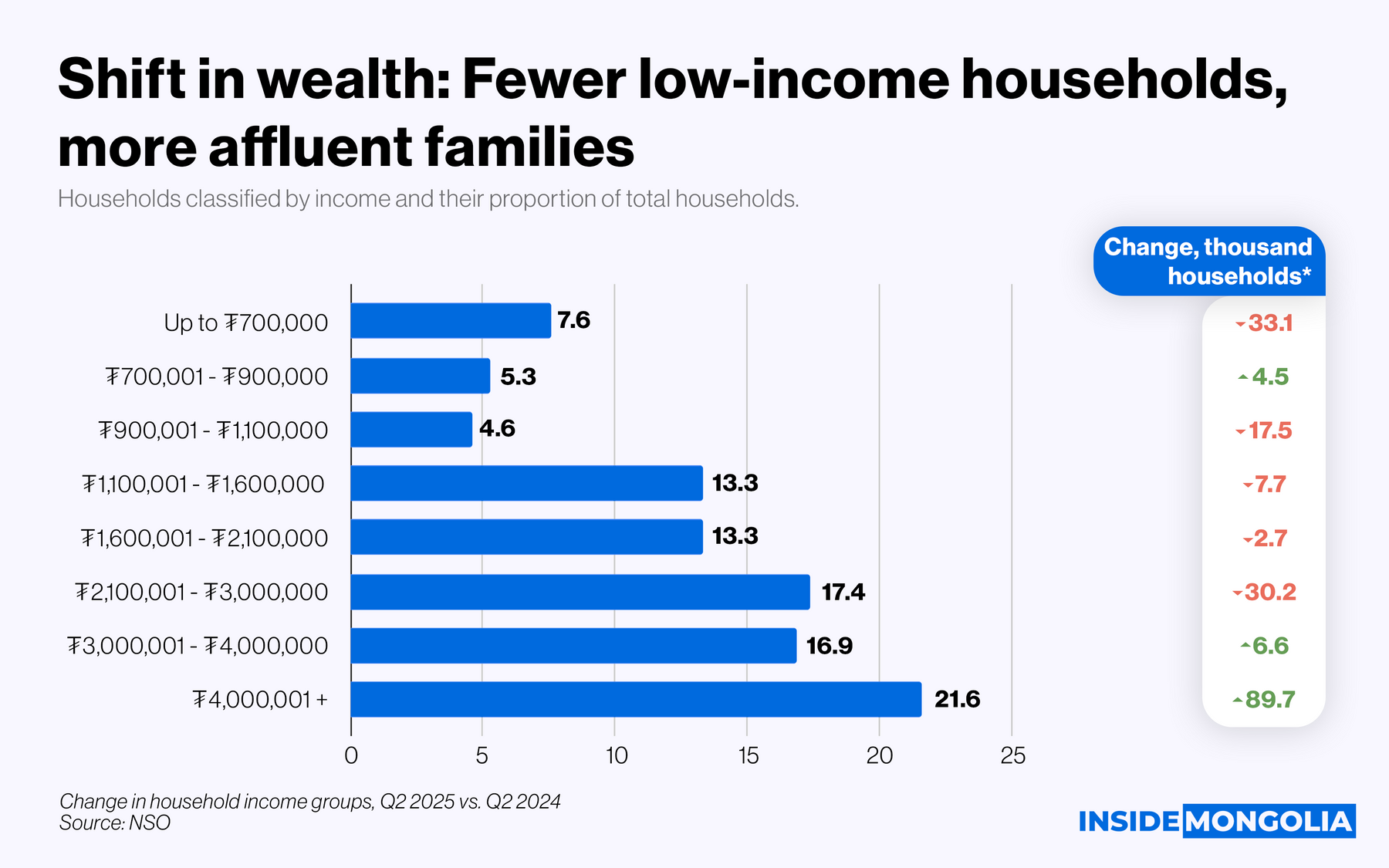Mongolian Household Income Grows, But Gains Unevenly
Khulan M.
August 25, 2025
August 25, 2025

Mongolian household income, adjusted for inflation and expressed in 2020 constant prices, rose 8% to ₮1.87 million. Yet real growth reveals a more nuanced story.
📈 Real Income Outpaces Expenses
In real terms, household income grew by ₮139,000, while real expenditures increased by ₮87,000. This indicates that income growth has outpaced household spending. In nominal terms, which do not adjust for inflation, average household income reached ₮2.95 million, of which ₮1.1 million reflects price increases rather than real purchasing power.
💸 Household Financial Balance
Despite income growth exceeding expenses, the average household still experiences a marginal deficit. The difference between nominal income and expenditures stands at ₮21.9 thousand, contributing to an increase in household debt levels.
🔍 Income Sources and Expenditure Structure
- Salary income constitutes 54% of total household income and grew by 10.1%.
- Pensions and social benefits account for 20.1%.
- The remaining income derives from agricultural and non-agricultural production and services.
On the expenditure side:
- Goods and services account for 64.1% of total household spending.
- Food expenditures represent only 1.7%, with the remainder allocated to other consumption and financial obligations.
📊 Income Distribution Shifts
Households in the lower-income bracket (up to ₮700,000) decreased by 33.1 thousand, whereas households earning over ₮4 million increased by 89.7 thousand. This suggests that economic growth is disproportionately benefiting higher-income households. Meanwhile, middle-income households show mixed trends, with some groups experiencing stagnation or decline in income.
💡 Policy Implication: Sustainable economic growth should translate into improved living standards for all households. It is crucial to implement measures that ensure the benefits currently concentrated among high-income households are also accessible to middle- and low-income groups.
Comment